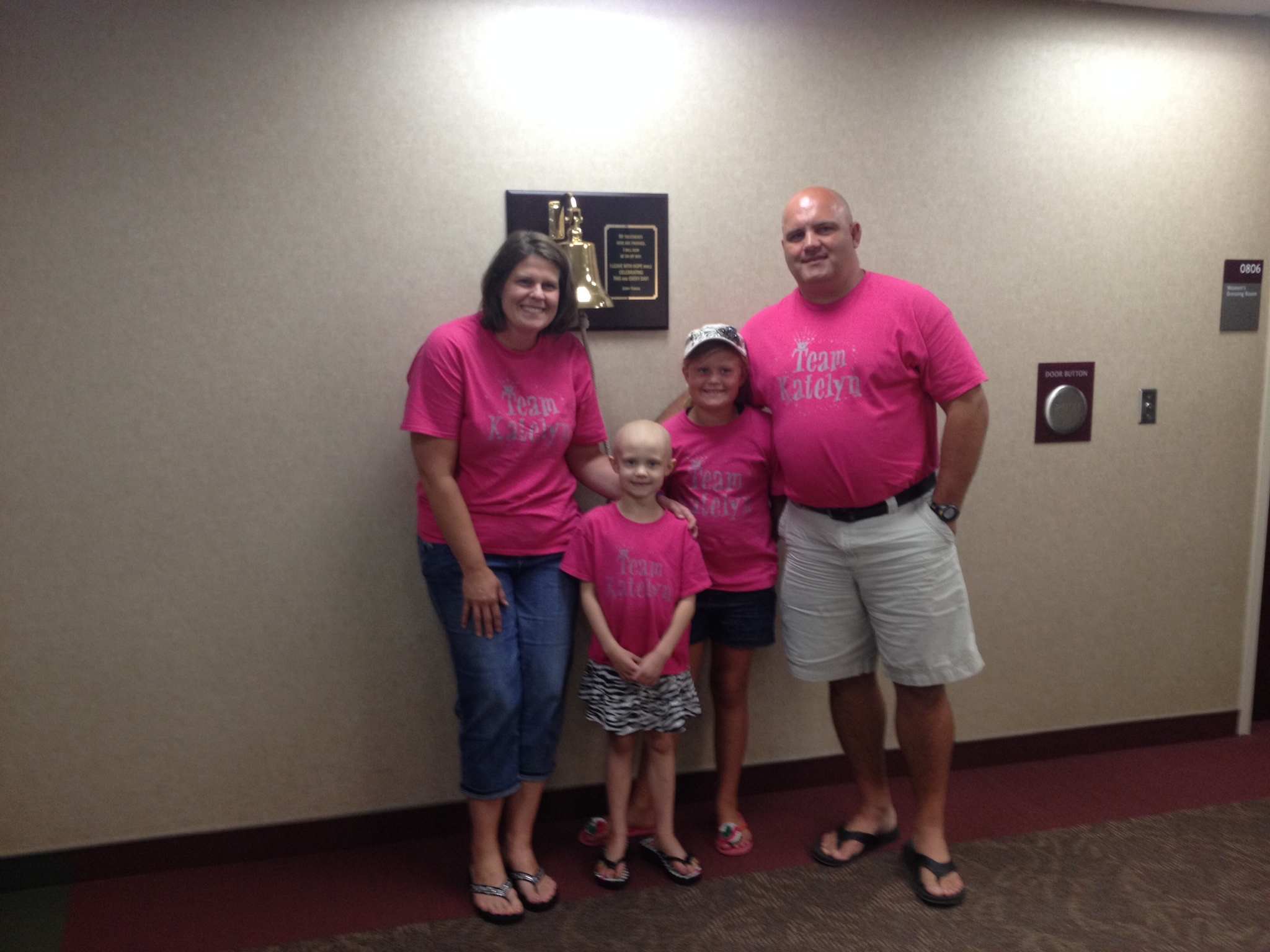Community Health Charities of Nebraska (CHC-NE) has announced the 2018-2019 CHC-NE Campaign Chairs for the West Central Nebraska region. Stacy and Brian Sybrandts, Grand Island, will lead efforts to achieve this year’s regional goal of raising $175,000 for 22 health charities through the donor-focused nonprofit organization, said Kari Hooker-Leep, CHC-NE Regional Director.
“We wanted to share our story of how important it is to donate to one of the 22 charities,” Stacy said. She and her family became involved with the Team Jack Foundation, one of the 22 CHC-NE member health charities, when her daughter Katelyn was diagnosed with a form of cancer called ependymoblastoma. “Think about what would happen if one of your children were ever diagnosed with a disease supported by any of the charities, not just pediatric brain cancer. The support that these charities give is individual.”
In May 2013, Stacy and Brian discovered a bump on Katelyn’s lower back around her tailbone area. Their family doctor ordered an ultrasound, and the results showed a sebaceous cyst that was expected to go away on its own. But in October, they noticed the bump was not getting smaller; it was actually getting larger. After another ultrasound, which determined the bump was a teratoma, and an MRI, she was referred to Dr. Bowdino, a neurosurgeon in Omaha. Katelyn finally had her "funny bump" removed on Jan. 27, 2014, and the tumor was sent to pathology.
“We were confident it was a benign tumor,” Stacy said. “But 11 days later, on Feb. 7, 2014, to be exact, we received a call from Dr. Bowdino. That day would forever change life as we knew it.”
The pathology report showed a form of cancer called ependymoblastoma, Stacy said. “We were devastated and completely blindsided when we got this call. In our minds, we thought the tumor would be removed, and Katelyn would go on living a normal life.”
But Katelyn’s journey was far from over, and her case became more complicated, as her cancer presented itself in a nontypical way. “Ependymoblastoma is usually located in the brain or central nervous system, but Katelyn's was actually outside of that area, which is a true rarity,” Stacy said.
Another MRI and a CT scan found a mass in front of her tailbone and an enlarged lymph node in Katelyn’s groin area, which were removed on Feb. 24. Again, the Sybrandts had to wait for the pathology results to give doctors—and their family—some of the answers they were looking for.
After 16 days, Katelyn’s pathology reports showed that the new tumor was a myxopapillary ependymoma and the lymph node was ependymoblastoma, and doctors were able to determine the cancer started in the new tumor. “But the question still remained, ‘How can she have ependymoblastoma outside of the central nervous system?’” Stacy said. “The doctors have been stumped ever since this has happened. Katelyn has always been one of a kind to us, and now she is one of a kind in the medical world. Doctors have already started writing up her case study.”
Because of the rarity of her cancer, Katelyn’s oncologist, Dr. Coulter, was in contact with doctors and other hospitals around the United States to determine how this happened and figure out how he was going to treat this disease so it would never return, Stacy said. The family also got involved with the Team Jack Foundation. “The Team Jack Foundation is a wonderful organization that has helped us personally along our journey with Katelyn’s diagnosis,” Stacy said. “The Team Jack Foundation has committed to more than $3.8 million in projects, and the research is ongoing. They recently helped with the Fred & Pamela Buffett Cancer Center on the UNMC campus. Katelyn underwent 33 radiation treatments and still continues to visit her doctor there.”
Dollars given to CHC-NE during the upcoming 2018-2019 campaign will help children like Katelyn and families like the Sybrandts. “This support is so important in finding treatments for innocent children who are being diagnosed every day. The chemotherapy treatments that Katelyn was given is years old and are for adults only,” Stacy said. “Only four percent of federal funding is used for finding new treatments. That is simply not enough for Katelyn and our children.”
Brian and Stacy live in Grand Island and have 4 daughters: Kyla (12), Katelyn (9), Kamry (5) and Keely (5). Stacy is a teacher at Westridge Middle School and Brian works for Northwest Public Schools.

